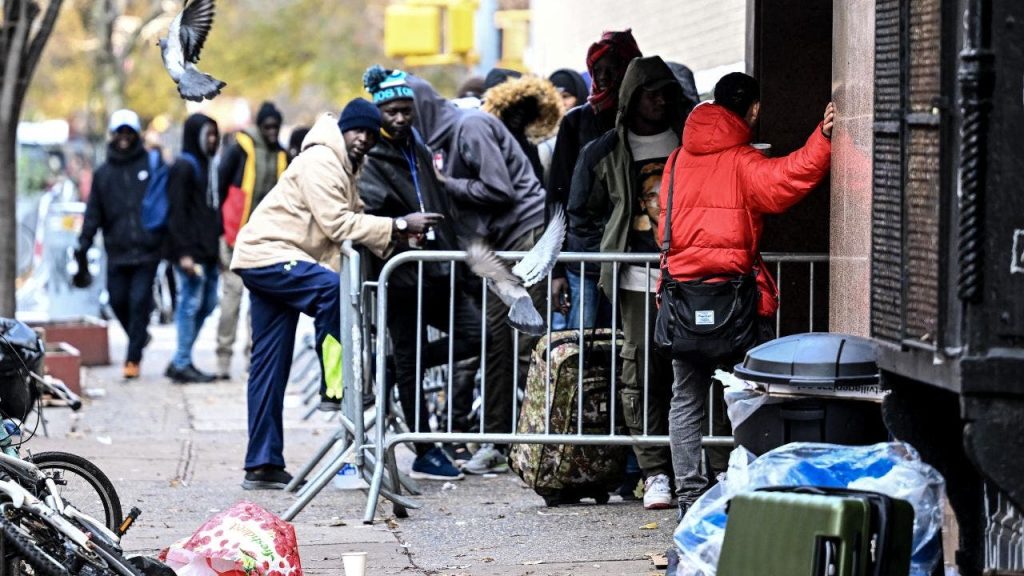Recent data highlights a troubling rise in migrant-related crimes in New York City, particularly within shelters. A significant number of arrests have been documented, sparking debates about public safety and the challenges faced by authorities. This report outlines the specific crimes committed, trends in the migrant population, and recent violent incidents involving gangs.
| Article Subheadings |
|---|
| 1) Overview of Migrant Crime Rates |
| 2) Types and Frequencies of Crimes |
| 3) Trends in the Migrant Population |
| 4) Notable Violent Incidents |
| 5) The Response from Authorities |
Overview of Migrant Crime Rates
In light of rising concerns, the New York City Police Department (NYPD) has reported alarming statistics regarding crimes committed by migrants residing in city shelters. According to recent data collected between January 1, 2023, and October 31, 2024, over 3,200 migrants living in 48 shelters across the city have generated a staggering number of arrests, totaling 4,884. This rise in crime among shelters, previously centers for humanitarian aid, raises serious inquiries into the issues surrounding migrant integration into urban environments.
Types and Frequencies of Crimes
The data provides a comprehensive breakdown of the types of crimes predominantly associated with migrant residents. Theft emerged as the most frequently reported crime, accounting for 1,285 of the total arrests. Following theft, assaults totaled 544 incidents, and drug-related crimes amounted to 497. Additionally, migrants were implicated in 493 cases of grand larceny, 236 robberies, and 141 sex crimes. These figures signal an urgent need for enhanced law enforcement strategies and community support systems to address these pressing concerns.
Trends in the Migrant Population
Substantial fluctuations in the migrant population within New York City shelters illustrate the evolving crisis. From January 1, 2023, when the number of migrants in shelters was recorded at over 24,000, the figures have soared to over 59,000 by October 31, 2024. Remarkably, this peak eclipses 69,000 during certain periods, signaling an increasing strain on city resources and infrastructure. Currently, more than 39,500 individuals reside in these shelters. Such rapid demographic changes complicate law enforcement and community integration efforts while stirring public anxieties around safety.
Notable Violent Incidents
Last week, incidents highlighting the association between certain migrant communities and crime became particularly pronounced. The NYPD confirmed that two officers suffered an assault by a group of teenagers identified as members of the Venezuelan gang Tren de Aragua in Times Square. This assault involved juvenile suspects throwing various objects, such as glass bottles and rocks, at responding officers during a robbery intervention. Of the 11 individuals involved, five have been arrested, with the youngest suspect being only 12 years old. These violent encounters underline an urgent public safety concern in areas heavily populated by concentrated migrant communities.
The Response from Authorities
In response to the rising tides of crime, local authorities, including NYPD officials, are grappling with both law enforcement challenges and community outreach efforts. Public statements suggest a commitment to addressing the complications posed by juvenile policies that may inadvertently allow frequent offenders to evade appropriate consequences. Moreover, NYPD Commissioner Jessica Tisch highlighted systemic issues in juvenile crime policies that result in repeat offenses among those previously arrested. The community stands at a crossroads, as officials strive to balance public safety with the humanitarian responsibilities of managing a burgeoning migrant population.
| No. | Key Points |
|---|---|
| 1 | Over 4,884 arrests of migrants in NYC shelters within a year. |
| 2 | Top crimes include theft (1,285), assaults (544), and drug offenses (497). |
| 3 | Migrant population in shelters surged from 24,000 to over 59,000 in less than two years. |
| 4 | NYPD faces challenges due to juvenile crime policies affecting repeat offenders. |
| 5 | Violent incidents involving gangs raise significant public safety concerns. |
Summary
The recent surge in crime amongst migrant populations in New York City has sparked serious concerns about public safety and the effectiveness of current laws governing juvenile offenders. As local authorities and community leaders aim to balance humanitarian support with law enforcement responsibilities, the increasing crime statistics underscore pressing challenges that beg for both immediate and long-term solutions. Addressing the underlying causes of crime while ensuring the safety of both migrants and residents remains a complex task for city officials.
Frequently Asked Questions
Question: What are the main types of crimes reported among migrants in NYC?
The primary types of crimes include theft, assaults, and drug offenses, with theft being the most frequently reported.
Question: How has the migrant population in shelters changed over the past year?
The migrant population in NYC shelters has seen a substantial increase, rising from over 24,000 at the beginning of 2023 to more than 59,000 by late 2024.
Question: What specific incident brought attention to migrant gang activity?
A violent assault involving NYPD officers by members of the Venezuelan gang Tren de Aragua in Times Square highlighted concerns surrounding migrant gang activities within the city.


